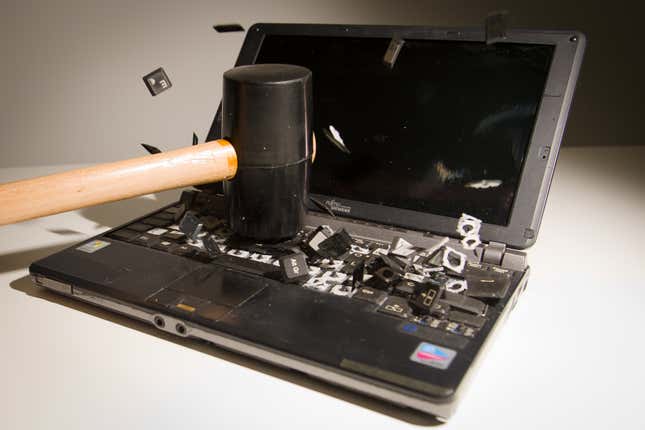
Microsoft is finally talking honestly about allowing for self-repair of its products as many other big tech companies start to loosen their grip on fixing their electronics when they eventually go bust.
Microsoft has said it will be working toward a future of self-repair, thanks to a newly released study commissioned by the company which says there would be massive benefits for the environment in terms of waste and emissions if more people had the option to repair devices, though it might have to be through an authorized repairperson.
The report by UK-based business management consultancy firm Oakdene Hollins says that repairing a product instead of replacing it can yield a 92% reduction in potential waste and greenhouse gas emissions. The waste reduction of user repair is even more significant if users have access to local repair options, especially with newer Microsoft devices.
The study looked at different scenarios for repair, including it being shipped to factories in both the U.S. and China, and found that repair by “Authorized Service Providers” using field replacement units was the most sustainable. Currently that ASP repair is only available to corporate customers of certain, newer Microsoft products. The study also emphasized that recent changes to the way its products were designed, making them easier to disassemble and repair, also revealed big gains in terms of sustainability.
Though it is important to note the study does not focus on self-repair, instead talking up the benefits of using localized repair shops approved by Microsoft, shipping devices to be repaired in factory, and designing devices in ways that make them easier to fix.
As first reported by Grist, Microsoft had already agreed to act on findings of the study when it was eventually released. Late last year, the tech giant agreed to a shareholder resolution put forward by sustainability-focused investor group As You Sow. Microsoft not only agreed to fund the study on self-repair, it also promised to act on the study’s results.
Still, it seems like the company is taking its time, shuffling instead of sprinting towards a full implementation of self-repair. In a statement, a Microsoft spokesperson said the company has “been taking steps for years to improve device reparability and to expand the available choices for device repair.”
The spokesperson added that “the findings will aid in our product design and plans for expanding device repair options for our customers that are safe, effective, and sustainable.”
A separate Microsoft spokesperson told Grist “Independent repair is one piece of this portfolio of repair options and, by the end of 2022, we will undertake a limited pilot program to enable repair of certain devices by qualified independent repair shops.”
It’s been a long road for advocates of right to repair, but earlier this year Microsoft did hint at this eventuality with a video showing how to open up the shell of a Surface Laptop SE. Prior to this, Microsoft was consistently scoring extremely low on users’ ability to fix its products.
Microsoft would be joining a host of other companies, including Samsung and Google, that are working with self-repair company iFixit to make it easier for users to repair phones. Just this week, Apple released its own self-service repair program and repair kit rentals, allowing people the opportunity to buy the parts needed to fix the iPhone 12, iPhone 13 and iPhone SE, with future plans to bring the service outside the U.S. and to facilitate repair of Mac products. Though of course, it wouldn’t be Apple if the company didn’t stipulate you need to pair your phone with configuration software after the new parts are installed.